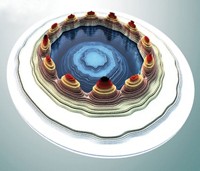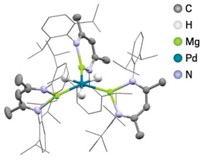Advertisement
Grab your lab coat. Let's get started
Welcome!
Welcome!
Create an account below to get 6 C&EN articles per month, receive newsletters and more - all free.
It seems this is your first time logging in online. Please enter the following information to continue.
As an ACS member you automatically get access to this site. All we need is few more details to create your reading experience.
Not you? Sign in with a different account.
Not you? Sign in with a different account.
ERROR 1
ERROR 1
ERROR 2
ERROR 2
ERROR 2
ERROR 2
ERROR 2
Password and Confirm password must match.
If you have an ACS member number, please enter it here so we can link this account to your membership. (optional)
ERROR 2
ACS values your privacy. By submitting your information, you are gaining access to C&EN and subscribing to our weekly newsletter. We use the information you provide to make your reading experience better, and we will never sell your data to third party members.
Materials
Supermolecular Wizardry
Nanoclusters: Magic-sized gold clusters behave like supermolecules, contorting into fancy shapes
by Matt Davenport
October 19, 2015
| A version of this story appeared in
Volume 93, Issue 41
An international research team has wrapped thiolate-protected groups of gold atoms into benzene-like rings and DNA-like helices that are too small to be considered nanoparticles, but too big to be thought of as molecules (Sci. Adv. 2015, DOI: 10.1126/sciadv.1500425). These structures, which are stable in solution, could be useful for catalysis, biosensing, and drug delivery, says team leader Rongchao Jin of Carnegie Mellon University. And if that weren’t enchanting enough, the newly synthesized superstructures are also known as magic-sized clusters because they are made from an especially stable “magic number” of gold atoms—40 for the rings and 52 for the helices. Magic-sized gold clusters first bewitched researchers years ago, Jin tells C&EN, but the previously synthesized structures are best described as superatoms. In those structures, gold atoms contribute electrons to build a cluster with a stable electronic configuration, essentially filling superatomic valence shells. In the new structures, tetrahedrons of gold atoms act as the primary, electron-donating units, with gold-thiolate staples holding the polyhedrons together. Rather than superatoms, Jin says, these new structures are supermolecules.






Join the conversation
Contact the reporter
Submit a Letter to the Editor for publication
Engage with us on Twitter